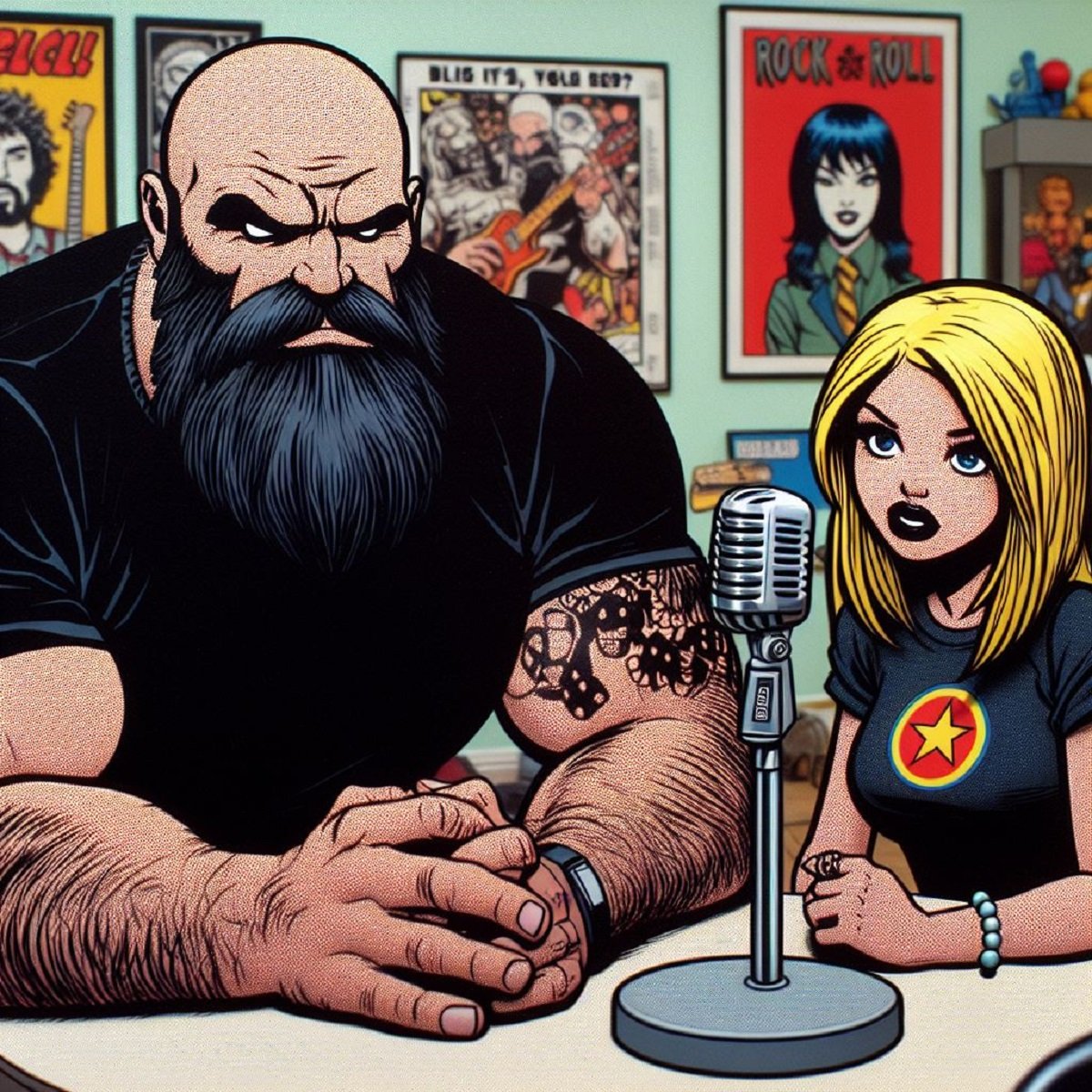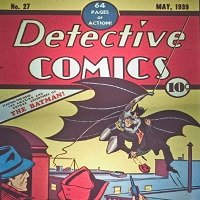Echos Of The Pop: Talk shows, Reality TV, and human nature
By: Juan Nunez (Twitter)
Content warning: this article looking at various topics related to society, television, and social media touches on multiple cases of suicide. It doesn't contain any graphic details, but if you find yourself in the middle of a crisis, this may not be a good time to read this article. Here is a list of free world-wide crisis hotlines. - Suicidestop.com - Remember to be kind to yourself. Everyone is special.
"People Are Alike All Over" is the 25th episode of the Twilight Zone. It first aired on March 25, 1960. It's directed by Mitchell Leisen, a long time Hollywood director with movie credits going back to the 1930s. The script is written by Rod Serling himself, and it's based on a short story by "Brothers Beyond The Void" by Paul W. Fairman. The episode is about a pair of Astronauts on a journey of exploration to Mars. One is afraid of the unknown, and one takes comfort because no matter who they find on Mars, people are all the same. The astronaut that isn't afraid dies after a crash landing. The astronaut who is afraid finds aliens look very human-like. The Twilight Zone twist is that the aliens are all-too-human and put the astronaut on display in a zoo for their own amusement.
Humans were put on display like caged animals through much of the late 19th and early 20th century. Not in fiction, in real life. There are examples of African, Native American, and other indigenous people displayed in Human Zoos in various major cities in the United States and Europe. One such example was Ota Benga. 39 years after the passage of the 13th amendment that officially outlawed slavery, Ota Benga was on display at the 1904 St. Louis World Fair as a "genian African cannibal", and at the Bronx Zoo in New York City in 1906, where he was on displayed in the Monkey House. Tens of Thousands of people visited the exhibit to watch and taunt Ota Benga as an animal. Ota Benga was understandably in distress and attempted to escape multiple times. This was not a vaudevillian freak show. This was backed by mainstream scientists and politicians of the era.
It's easy to dismiss these events as mere works of fiction or unfortunate events from our not-so-distant past. We assume that modern people have matured past such things. We wouldn't put people on public display under highly questionable circumstances for our own amusement with no regard for such actions' long-term effect, would we? Of course, in reality, we are subject to the same influences as our ancestors. 10, 50, 100 years isn't enough to change fundamental building blocks of our humanity. Pack mentality is just as strong in us. Our brains produce dopamine while consuming entertainment, giving us feelings of happiness. These factors can be crafted into a formula of entertainment in which we, as a part of a group of viewers, passively or actively judge real people on public display without giving a thought to how those people found themselves in the public eye or how the experience might affect them afterward.
In the mid to late 1990s, the Jerry Springer Show broke into the mainstream by perfecting the formula of real people with sensational and controversial backstories getting in confrontations on national television. It was not the first show of this kind, but the show did it more effectively than any other before or after. The Jerry Springer Show debuted September 30, 1991. In the early days, the show was very different from the show most of us remember. The show focused on smart and calm discussions of political and social subjects by respectable guests. Jerry Springer has a doctorate in Political Science from Northwestern University. He was a political advisor for Bobby Kennedy, and he was served as mayor of Cincinnati. The quest for higher ratings gradually changed the Jerry Springer Show into the controversial show that we all remember.
The Jerry Springer Show was the most popular in a series of day time talk shows featuring real people with controversial stories. The Phil Donahue Show, Ricki Lake, and The Jenny Jones Show were among the most popular shows on daytime television during this television genre's height in the late 90s to early 2000s. Everyone over the age of 30 has sat through at least part of an episode featuring guests telling their wild stories to a rowdy audience, which often fired back with clever one-liners. If the audience didn't like a particular guest, the one-liners could be very mean.
Ironically, one of the most notorious cases from a daytime talk show came from an episode of the Jenny Jones show, which didn't seem particularly contentious when it was taped. The show's title was "Same Sex Secret Crushes." Scott Amedure was a guest on the show who revealed that he had a crush on his friend, Jonathan Schmitz. On the show, Schmitz took the news gracefully. He seemed uncomfortable but not particularly upset. The audience cheered, and overall it seemed like a good time was had by all. Three days after the taping, Jonathan Schmitz shot and killed Scott Amedure. He blamed the shooting on being humiliated by the reveal on national television. During the trial, it was revealed that Jonathan Schmitz had a history of mental problems.
It's important to note that this episode of The Jenny Jones Show was not unique in how it was handled. It was one of 1,500 episodes produced for this show over its 12-year run. All of the episodes fall into popular topics that became tropes of the genre, such as extramarital affairs, troubled teens, makeovers, and more. The Jenny Jones Show was one of several series that aired for around a decade and produced more than 1,000 episodes. With such a large sample size, one has to wonder how many lives with negatively affected by appearing on these shows?
In 2019, Blake Alvey, a former guest on the Jerry Springer show, committed suicide. He blamed his appearance on the show in a case with many similarities to the Jenny Jones showcase from two decades earlier.
Time passes, and the public tastes change. The daytime talk show fell out of fashion in the 2000s. Around the same time, reality TV became one of the dominant genres of television. It pushed a similar concept as talk shows, real people with sensational and controversial backstories. Instead of relying on testimonies, you could watch their outrageous lives as they happen. From reality competition shows like Survivor to family reality TV shows such as MTV's The Osbournes, a show that followed Ozzy Osbourne and his family, reality TV comes in many different formats. Each with their own unique tropes. While reality TV creates the illusion of "real," most of what we see is pre-arranged by producers. There may not be a line by line script per se, but the results that we see can range anywhere from manipulated to outright faked. Like professional wrestling, just because it's predetermined, it doesn't mean people aren't really getting hurt.
One of the ways that producers can manipulate their shows is by selecting the "right" contestants. For example, allegedly, American Idol doesn't select participants only based on musical talent. Instead, they choose who they feel will entertain the TV audience the most. The people we see on TV are picked before we ever see them on TV to be a mix of talented singers, less talented but charismatic underdogs, and people who shouldn't pass any reasonable screening process. One such example was the contestant Paula Goodspeed in season 5 of the show. She was an obsessive fan of Paula Abdul, with a noticeable lack of musical talent. Abdul was aware of Goodspeed from an early failed audition. She objected to Goodspeed's inclusion on the show for obvious reasons, but executive producers Ken Warwick and Nigel Lythgoe allegedly overruled Abdul. On the show, Paula Goodspeed was presented as a joke and humiliated by host Simon Cowell before being dismissed. This was a standard procedure for American Idol. A way to keep the episodes early in the season entertaining before the more competitive later rounds started. Some of you may remember the name, William Hung. Two years after Paula Goodspeed's appearance on American Idol, she committed suicide outside of Paula Abdul's home. American Idol completed its 18th season in 2020.
Simon Cowell fits into the trope of reality TV of the "tell it like it is" tough-talking hosts and judges that insult and ridicule a participant that is in way over the heads. Some other examples of these tropes include Gordon Ramsey of Hell's Kitchen and Kitchen Nightmares, Mia Michaels of So You Think You Can Dance, and many others. The TV audience sometimes agrees with the host or judge and laughs at the joke participant, or the TV audience disagrees, and the host or judge is cast as the villain. Either way, the audience is left with a feeling of moral high ground—a key to that ever-important dopamine release.
It's not difficult to connect cyberbullying and viral outrage stories on modern social media to guests' humiliation on TV shows of the past. Social media is taking the formula of entertainment via judging people in public and weaponizing it. It makes it an active process where you can get instant feedback from other like-minded people, also taking part in the pack, judging someone as good or bad. Furthermore, the dopamine fix isn't just for that few hours you've spent watching television. It follows you through your day as you continually check-in to see the latest status. I don't know how many people are willing to admit, but getting caught up in a wave of outrage is a form of entertainment in today's day and age.
People are alike all over, indeed.
If you found this article interesting consider becoming a Patreon supporter. That is how When It Was Cool keeps our website and podcasts online, plus you get lots of bonus content including extra and extended podcasts, articles, digital comics, ebooks, and much more. Check out our Patreon Page to see what's up!
If you don't want to use Patreon but still want to support When It Was Cool then how about a one time $5 PayPal donation? Thank you!


















































